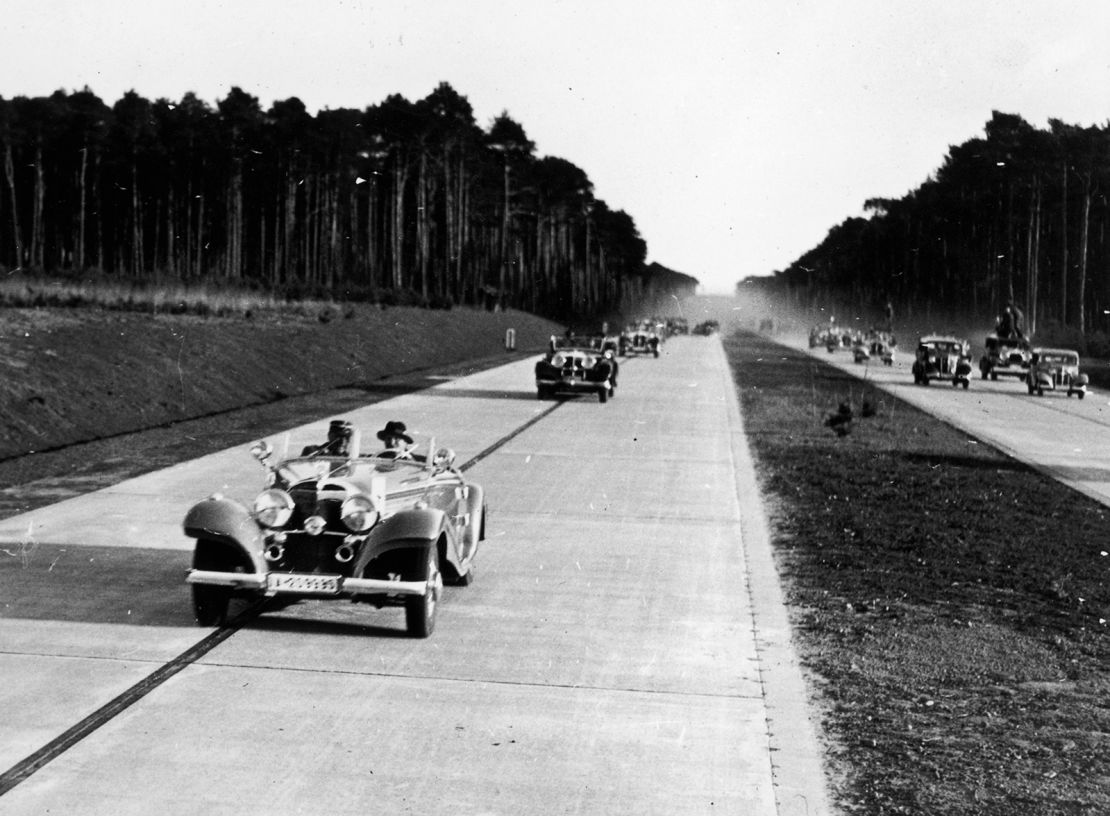Editor’s Note: Paul Hockenos is a Berlin-based writer focusing on renewable energy in Europe. He is the author of four books on European issues, most recently “Berlin Calling: A Story of Anarchy, Music, the Wall and the Birth of the New Berlin.” The opinions in this article are those of the author. View more opinion on CNN.
Horsepower-flush automobiles and the 7,200-mile highway system that accommodates them – called the autobahn – are part and parcel of national mythology in Germany.

But driving on the autobahn, long stretches of which forswear any speed limit at all, can be a chilling experience for the timid.
I’m not a slow driver – and indeed am a native of the US, a country that too mythologizes the open road.
But it’s utterly disconcerting when, ticking along at a brisk 75 miles per hour, somebody blows by me on the left and then disappears over the horizon as if I were driving a lawnmower.
For decades, German drivers (overwhelmingly male ones) have relished this ostensible perk of limitless speed, many in precision-engineered automobiles with such storied names as Volkswagen, BMW and Mercedes Benz.
Now, the climate crisis is prompting Germans to rethink their relationship with the autobahn, long feted as the crème de la crème of highway systems. (Adolf Hitler did not start the project, as often cited, but rather embellished it – to propaganda-rich fanfare.)
Germany’s transportation sector’s carbon emissions, say experts, are attributable overwhelmingly to cars and trucks – and the higher the speed of a car, the greater the emissions.
What’s the purpose of four or five-lane thoroughfares in an epoch when new gas-and-diesel burners will, if the EU parliament has its way, be banned by 2035 anyway?
Of course, Electric Vehicles (EVs) require good roads, too. But because their horsepower and top speeds are often lower, they require less superhighway – and more charging stations on well-kept roads. An e-car’s high speed, while impressive, still generally pales to the motorheads I see on the autobahn pushing 140 miles per hour.
Also, with limited resources, the burning question in Germany at the moment is whether tens of billions of euros earmarked for new and broader autobahn wouldn’t do more good building out cycling highways, like in the Netherlands, or an improved high-speed, densely networked rail service.
Ultimately, the proclivities of the car zealots have no place in the 21st century when we’re racing against the clock to decarbonize our economies.
The European Union is toiling to sink emissions by at least 55% by 2030, while Germany wants to better that by another 10%. Moreover, we’re locked in an energy showdown with Vladimir Putin’s Russia.
Yet the EU’s transport emissions have shot up steadily for years, slowed only temporarily by the Covid-19 pandemic. In Germany, the trend is even worse: transportation’s share of emissions in the national footprint rose almost by half between 1990 and 2022. While emissions in almost every other sector, including industry, have fallen.
Germany has the most cars on the road of any EU country (almost 49 million). And while its EV sales are soaring, government dreams of having 15 million registered battery-installed vehicles by 2030 are expected to fall far short.
This is why the International Energy Agency, a global energy forum, urges Germany, as well as every other country with an automobile culture, to embark immediately on a sustainable transportation revolution. The EU’s Green Deal foresees Europe as the first carbon neutral continent in the world by 2050. And just this month, the EU Commission proposed a zero-emissions target for new city buses by 2030 and 90% emissions reductions for new trucks by 2040.
But Germany is stalling, with the heavy-set automobile manufacturers and their powerful lobby staunchly behind the unrepentant car lovers.
The automobile-friendly corner – which includes one political party, the liberal Free Democrats – pays lip service to the benefits of trains, bikes and electric mobility. But it fights tooth and nail against reducing subsidies for long-distance automobile commuters and the prioritizing of low-carbon investments over more, wider, faster autobahn.
In six locations in Germany – including in Berlin, practically straight through my family’s backyard – new autobahn lengths are being planned or built.
The Free Democrats, who are part of Germany’s ruling government coalition, along with Social Democrats and the Green Party, make the audacious argument that more autobahn would relieve traffic jams, which provoke popular ire and cast large emission footprints.
Preposterous, responds mobility expert Urs Maier of the Berlin think tank Agora Verkehrswende. “Studies and experience show definitively that the more road you pave, the more traffic you’ll get. Initially, it makes driving easier and more attractive, but after a short time you’ll have the same traffic jams as before but only on more lanes,” he told me.
Environmentalists, on the other hand, insist that the key to bringing mobility emissions under control is moving private and commercial traffic from the road to rails. (German long-distance trains are largely electrified and boast less than a quarter of a car’s footprint).
But Germany’s rail network – once a source of national pride – has suffered greatly from years of neglect under the various Angela Merkel-led governments between 2005 and 2021. Underinvestment has caused the number of delayed and scratched trains to soar, understandably incensing train travelers (whom I noticed during my Christmas-time trip to the in-laws tend to blame the current government for the fiascos.)
The Greens in particular preach the virtues of sustainable mobility and insist that investment in an effective and tightly networked train system is the answer – as well as affordable fares.
During the pandemic summer of 2022, the federal government decreed the issue of €9-a-month all-Germany ticket valid for all buses, metros and regional trains from the Baltic Sea to the Alps. The ticket was a smashing success, at least in terms of sales: 52 million in total.

Yet, even though many more people were traveling in (jam-packed) trains, the limited offer didn’t mean that folks who adore their cars and the autobahn were any less loyal to the objects of their affection. A wide-ranging shift away from internal combustion engines isn’t going to doom either road travel or the autobahn.
Instead, Germany’s highways could be reimagined: a slimmer autobahn for e-cars, e-buses and e-trucks with regular high-speed charging stations, or in the future electric roads.
With some 70,000 charging stations for electric vehicles across the country, Germany hopes to rapidly scale up that number to 1 million over the next decade.
Five decades after the German band Kraftwerk’s 1975 hit “Autobahn” was released, its repetitive message – intended to evoke the monotony of traveling on the highway itself – isn’t at risk of becoming obsolete in the near future. “We drive, drive, drive on the Autobahn. We drive, drive, drive on the Autobahn.”



